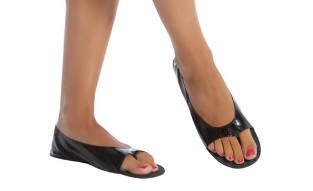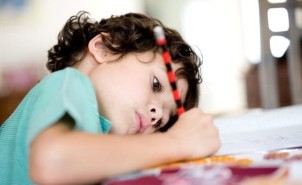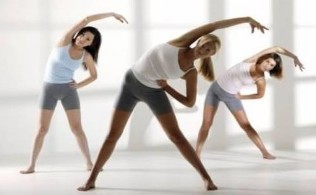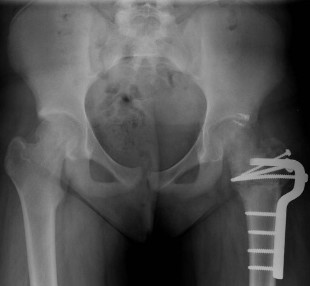The technical progress, the maximum ease the life of modern man. Where were the factories, now, in large part, dominate the shopping centers, cinemas, and beauty salons. The process of production of goods is almost entirely mechanized and computerized. Itself and production of the scope of the gradually been replaced by service industries. Person, waiting for hours sitting at the office, trying to find another effective way of sale, marketing, or another variant of the extraction of money from foreign portfolios. And then, he sits down in your car and with the comfort of an armchair driver goes to the house. Of course, we have drawn a perfect image, not to mention the traffic jams on the road, offices, transport transport, that rivers has a large part of the population, etc., But who does not want to live at ease?

But much of the benefit of comfort? Our century is already said, the century of inactivity, which leads to a lot of unfortunate consequences. Cardio-vascular diseases, obesity, hypertension, sciatica and other diseases are provided with the private vehicle, a desk and a chair of his own office. But the most common disease we suffer from to a sedentary way of life, is low back pain. It is he who will be the subject of this article.
Osteochondrosis
What is low back pain? Consider the mechanism of development and types of illness When we hear of osteochondrosis, then first think of the back pain and muscle. However, in itself, a disease directly the muscular does not affect. The changes occur in the cartilage in the joints of our body.
The Cartilage tissue protection and the padding of the function. In addition, it emphasises a secret, which lubricates the joint surfaces, reducing friction during movement of the bones. But in some cases, the cartilage, the fabric from fraying (degenerates). In addition, when metabolic violations, lack of certain vitamins and trace elements, as well as in the hereditary metabolic crash disrupted the supply of tissue to cartilage, and it loses its resistance and elasticity. This state bears the name of dystrophy.
Thus, the osteochondrosis is degenerate-degenerative changes in the cartilage. Theoretically, the pathological changes may affect any joint. But in practice, the osteochondrosis is most often hits our spine. And depending on what part of the spine is localized to the process, the distinction of the lumbar, thoracic and cervical pain in the lower back.
Honda our spine. It consists of several bone formation of the vertebrae. Each vertebra has a body and a few shoots. Between the body and shoots a hole, through which passes tyazh of the spinal cord. The vertebrae are arranged in such a way that the holes form a hollow tube – the spinal canal. The body of the vertebrae on each other, and between them there are layers of cartilage – the intervertebral disc of cartilage. They fulfil the function of shock absorbers by cushioning the shocks and reduces the pressure on the spine when walking or other movements of the man. The vertebrae are similar in structure and different size. With the exception of a few accrete vertebrae sacro-coccygeal division and the seven elements of the cervical spine,which differ from each other by the structure.

The spine is available in four departments:
- cervical (from 1 to 7 vertebrae);
- chest (8 to 12 ft.);
- lumbar (from 13 to 18-th);
- the sacrum and the coccyx (this department is composed of motionless bones, and therefore is not involved in a pathological process).
As a result, the osteochondrosis of the spine is divided into three major types, which we have designated above.
Types of degenerative disc disease
Most often, osteochondrosis of the cervical spine, and the cervical vertebrae are the various buildings, and muscular apparatus, that supports the spinal column, in this part, developed is fairly low. With the time, in the cervix or in another department of the spinal disc of hyaline cartilage begins to condense, losing its firmness, and the vertebrae get closer to each other. The result of which can be pinch nerve fiber or blood vessel. As a consequence violated the innervation and vascularization of the competent organs, which causes disruptions in their work, to the reduction of motor activity, the onset of pain. In addition, during the movement of the vertebrae, its shoots can irritate the muscle tissue in this area, which leads to a spasm of the muscle disease. But in fact, on the background of the disease, the muscular device and must perform a double work, compensating for the drop of operation of the shock absorber of the spine and changing the position of the vertebral bodies.
With the neck of the uterus, very often also a sciatica pain in the lower back, which develops on the background of regular heavy loads on the back, lift heavy weights, and so on.
Thoracic osteochondrosis develops a little less than the first two variants of the disease. In addition, its diagnosis is difficult because the disease has a number of non-specific symptoms, similar to symptoms of angina. It should be noted the fact that the bodies of the vertebrae, cartilage, nerve fibers of the brain and the spinal cord does not have painful receptors, and therefore of pain at osteochondrosis door indirect nature. Osteochondrosis are also considered as some varieties of Osteochondropathy, who have a bit of a different etiology. On them, we're going to talk about in our article.

The causes of the disease
With the main cause of the development of the disease-degenerative disk – sedentary lifestyle – we have started the story. As the saying goes, the movement – life! How the lack of motor activity can have consequences on the state of our joints and the spine? The fact that our back has a corset of muscle that supports the spine and allows it to properly fulfil their functions. However, in the absence of physical constraints device muscle weakens, the spine will lose the support, the main burden rests on the cartilage discs, but with the time, are exposed to degenerative changes.
However, excessive physical activity, for example among the professional athletes, can also lead to the degeneration and the degeneration of the cartilage and therefore cause the development of degenerative disc disease, and other Osteochondropathy. Accordingly, in this regard, you need to adhere to the mid-in order to avoid health problems.
An important role in the development of the degenerative disease of the disc is of the style of life of modern man. In addition to the lack of sufficient motor activity, this can be attributed to an unbalanced diet, a lack of vitamins and minerals in the diet, smoking, alcohol consumption, the use in daily life and in the work place irregular furniture, sleep on a soft mattress, repeated poor posture, driving, working conditions, and so ded.
In the complex, all of this leads inevitably to the breaking of the power supply to the cartilage, the loss of its quality characteristics (strength, firmness, elasticity) and the development of the degenerative disease of the disc. Flat feet are a fairly common cause of the degenerative disease of the disc. Apparently, what is the relationship between the deformation of the arch of the foot may have pain in the back, and even more in the neck? It is the most direct. The judgment of the man is designed, which is able to distribute the weight of the body when walking. In the process of evolution of the bones of the foot formed of two sets – longitudinal and transverse. Thanks to this structure, with the advent of the curves physiological of the spine, it became possible to stand up to the man. If the arch of the foot for any reason is flat, all the load is transferred to the spine. And this pain in the back, and limiting the amount of movement, and even of the migraine.
In recent years, many researchers are looking more, in large part, on the development of the degenerative disease of the disk the influence of heredity.
The symptoms of the degenerative disease disk
How to recognize low back pain? The symptoms of degenerative disc disease are very varied. Although most of us know only about the main symptoms of this disease: muscle pain and difficulties in movement. However, we are not vain enough to talk in detail about the mechanism of development of degenerative disc disease. In fact, the signs of this disease is directly related to the processes that occur during the development of the pathology.
Therefore, as we already know, all of the symptoms of degenerative disc disease are associated with compressed vessels and nerve fibers followed by a violation of the innervation and the nutrition of the respective muscles, organs and tissues. Thus, changes not only affect the muscular device. Thus, the symptoms of cervical osteoarthritis is and frequent headaches, and even dizziness, with pain in the muscles of the neck and the shoulder girdle.

Headaches during osteochondrosis cervical has vascular origin: the circulation of blood in the tissues of the brain is disrupted, and the nerve cells experiencing hypoxia. With the same partner and dizziness, which can sometimes go up without knowledge of the state. Circulatory disorders, associated with neck of the uterus, low back pain, in rare cases, it can also lead to a decline in the hearing in the patient, and the disturbance of coordination of movements (instability of gait), hoarseness. Snoring can also testify to the evolution of the degenerative disease of the disc.
If the changes affect the intervertebral discs and thoracic spines , osteochondrosis will manifest by back pain location-appropriate, membership of an asthmatic component, the pain. Sometimes, the patient may experience dyspnea and arrhythmia. Patients are often confused by the emergence of cardialgiae with coronary artery disease (chest toad). But this kind of heart pain however, there are a number of distinctive features. Subjectively, they can be seen as a "number" in the chest. Reception of nitrates, and other antianginal fund management of the pain. When the angina in humans increases anxiety and even a fear of death. Chest pain in the lower back do not have such symptoms. Sometimes, angina is false, caused by osteochondrosis of the spinal column can last for several days, but it is not a threat to the life of man. Had pain in the heart a little bit of time, but ignoring it can lead to the development of myocardial infarction, and the time allocated to the medical assistance during the angina attack may be the cause of the death.
Osteochondrosis of the lumbosacral region of the spine is characterized by pain in the lower back. The pain may radiate in the lower limbs. The patient may also experience difficulty when walking, which is associated with a decrease in the tone innervated segment of the spinal cord to the muscles. The pain have the mania of character. Sometimes, the patient is often difficult to straighten the back, get up the bed or change the position of the body. The reflexes of the lower extremities osteochondrosis of the lumbosacral region reduces.
Osteochondropathy
We have already touched on in this article this problem, as the children of osteochondrosis. The symptoms and treatment of this pathology is different from that of adults. This is due, first of all, with the notion of a child to a degenerative disc disease involves a number of Osteochondropathy. The most common are:
- disease Keller,
- the Osgood–Schlatter disease,
- the disease of the Rose-May,
- the disease Legge-Calve-Peters.
The disease of Keller common in children aged 8 to 12 years of age, but may also develop in adulthood, which happens much less often. In this pathology affects substance spongy bone of the foot. And in addition, we can distinguish two main types of this disease. The case of the disease Keller the first type is system os navicular. If the disease passes through a second type, then the pathological changes affect metatarsal bone.
The disease Schlatter hits the tibial bone, in the area of the patella and develops in the age group of 11 to 14 years. The contributing factors are the sports activities (football, basketball, running, jumping, etc). Also the onset of the disease may be due to an inadequate rate of bone growth in adolescents and the development of cartilage.
The disease President-May, the curvature of the spine, which is one of the variants of breastfeeding to a degenerative disc disease. Develops this pathology is often in children and adolescents aged 8 to 14 years of age, for a long time, however, neither the child nor the child's parents may not notice the big differences. A visible sign is a violation of the posture of the child.

Legg-Calv-Perthes – this is a condition that affects the thigh, and more precisely of its head, in the area that is the cartilage, the tissue. Most often the disease affects children from 4 to 14 years of age and manifests itself in them limping. When this pathology arise necrotic in the tissues of the femoral head, which are non-infectious (aseptic) of nature. Most often the cause of the disease is a hereditary predisposition. On the first steps of the child starts to limp. Later, the baby, the pain in the region of the hip and knee, particularly when driving.
The prevention of the degenerative disease disk in childhood is an effort to be moderate, wear comfortable shoes, for the correction and the maintenance of a good posture, for this that there is a set of exercises. The low back pain and pregnancy no Doubt, if the woman is suffering from osteochondrosis, then planning a pregnancy, she must first make the treatment of this disease. Although ultimately cure this disease is impossible, because to completely rebuild the cartilage can not.
With enough propulsion activity, moderation and balance in the meals you will help to normalize your weight, and then keep it under control. The normal weight of a token of your well-being and the health of your back. And the health of the back is robust and refreshing sleep, and the lack of headaches, and the prevention of other diseases of the musculoskeletal system. Do you like, give him more attention and take care of your health!
































